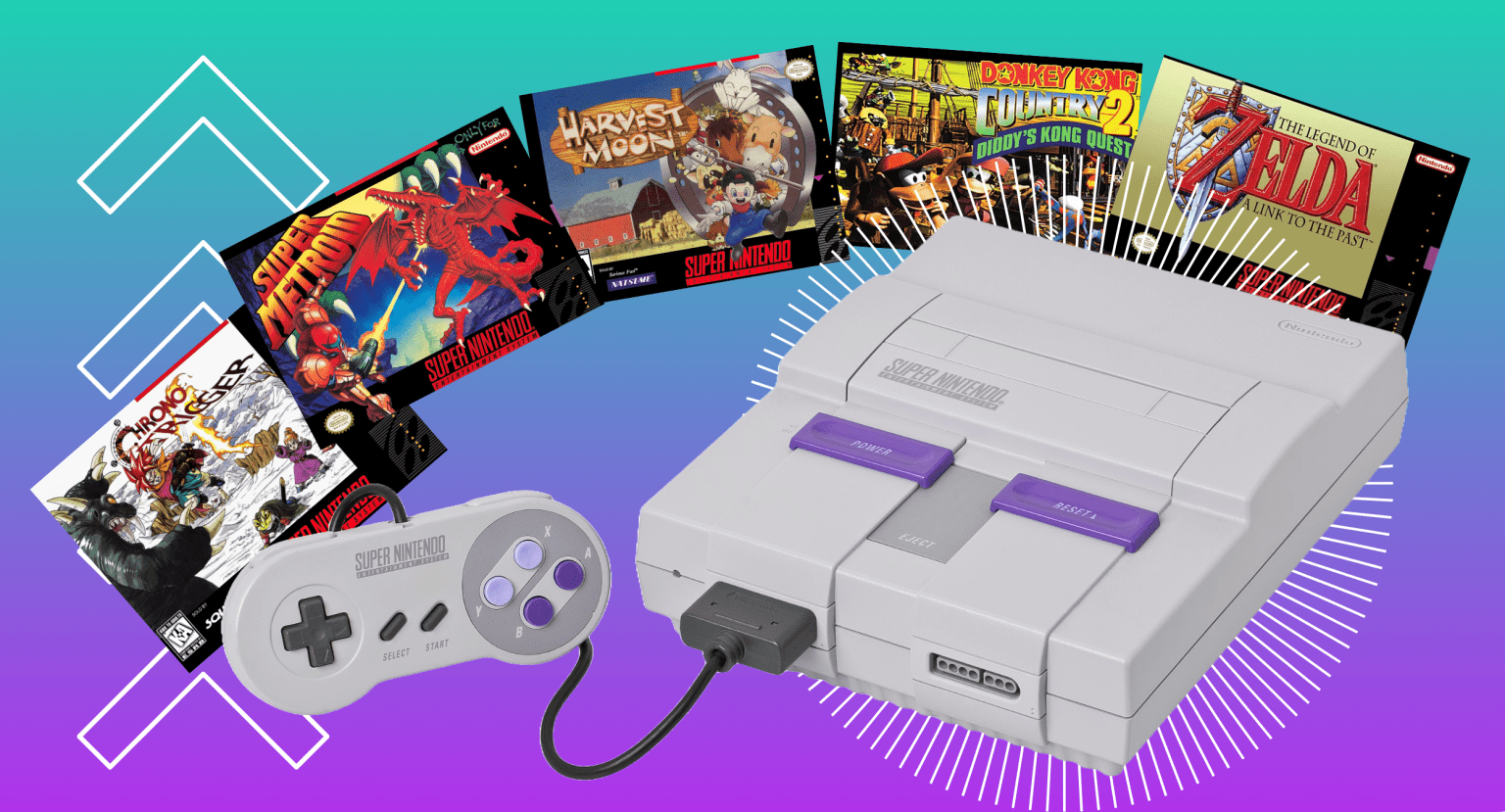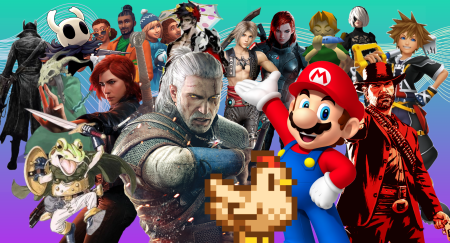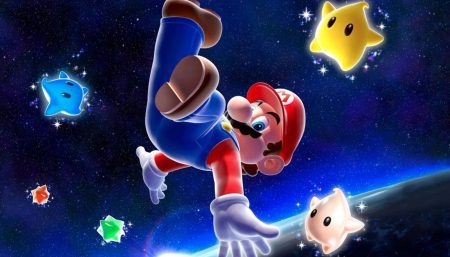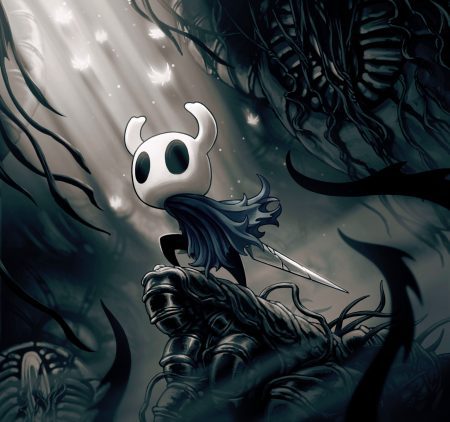Gamers can argue over the “best” console of all time until the cows come home. Still, there’s no denying that the Super Nintendo Entertainment System—Super Nintendo or SNES for short—is among the greatest platforms the medium has ever seen, at least in terms of its library of all-time classic titles.
Some of the best and most influential games of the 1990s released for the SNES. Wherever your tastes may lie, you will find something to love on the system: classic 2D fighters, arcade beat ’em-ups, racers, platformers, sports games, early first-person shooters, and—most notably—roleplaying games, a.k.a. RPGs.
For this edition of Punished Favorites, we’ve decided to highlight some of the console’s greatest games in honor of many top-shelf SNES titles—including a few on this very list—celebrating their 30th anniversaries this year.
– Sam Martinelli, Editor
The Punished Backlog’s 10 Favorite Super Nintendo Games
Without further ado, here are the 10 top SNES games to ever grace the console, according to our team here at The Punished Backlog.
Want to hop to a specific game on our list? Here’s every entry listed in alphabetical order:
- Chrono Trigger
- Donkey Kong Country 2: Diddy’s Kong Quest
- EarthBound
- Final Fantasy IV
- Final Fantasy VI
- Harvest Moon
- The Legend of Zelda: A Link to the Past
- Super Mario World
- Super Metroid
- Super Punch-Out!!

Final Fantasy VI
If Final Fantasy VII is the Michael Jordan of JRPGs, then Final Fantasy VI is Scottie Pippen. Square Enix’s PlayStation masterpiece was a watershed title, spawning an expanded universe arguably greater than the series that birthed it. And yet, VII would never have been possible without the creativity and cinematic grandeur of the SNES title that preceded it.
In any other gaming series, Final Fantasy VI would be the undisputed juggernaut. It’s a self-contained banger that tells the story of a ragtag rebel crew fighting to save the world from an evil empire helmed by a mad clown. Like its successor, VI features colorful party members, fantastic set pieces, an iconic antagonist, and incredible music. Visually, it’s actually aged better than its younger sibling, thanks largely to beautiful sprite work that holds up today.
Although the gameplay has its warts—namely, some difficulty spikes and a frustratingly high encounter rate—the story and characters of Final Fantasy VI elevate the game to superstar status. If you’re enjoying the Final Fantasy VII remake trilogy, but haven’t stopped to appreciate the series’ history, look no further than this SNES classic.
– Written by David Silbert

The Legend of Zelda: A Link to the Past
The original Legend of Zelda on NES was a revelation, but The Legend of Zelda: A Link to the Past on SNES might be the first truly iconic game in the series. The SNES classic took the open feel of the original game and doubled down on it by giving you two versions of Hyrule to explore: the Light World and the Dark World, both with their own secrets and mysteries.
What I loved about this game when I first played it was how big it felt. It truly felt like an overwhelming adventure in the best ways. The mirrored worlds mechanic lent itself well to the story, which was the first time we got to see some of the longstanding traditions of the Zelda series take shape, including the very first appearance of the Master Sword.
A Link to the Past holds up even to this day, which is a testament to its quality. The items, puzzles, and combat all feel just as good now as the day the game came out. While the previous two games introduced elements that have remained, the connection between Link, Zelda, and Ganon—and all of what we love about this series—was truly established here.
The game is absolutely the blueprint for every Zelda game that has followed, 2D or 3D. There is no time travel in Ocarina of Time, no Twilight World in Twilight Princess, no Depths in Tears of The Kingdom without this game. Opening the story up to the idea of a parallel world gave Nintendo so much to work with and they handled it perfectly. A Link To The Past is as close to a perfect game as it gets.
– Written by Anthony Franklin II

Chrono Trigger
In as simple terms as possible, Chrono Trigger does everything you love about RPGs. With its likable cast of protagonists, branching paths, and hidden secrets, Chrono Trigger isn’t just a high-water mark for the genre; it’s also one of the first games to play with the idea of what a game can be.
Before Chrono Trigger, many stories in games were either a) simple or b) exceptionally linear. While game creators had certainly taken great steps over the years to make storytelling more important, it wasn’t until Final Fantasy VI and Chrono Trigger (released within a year of each other, but Chrono started development first) that story truly became the driver in games. So, hey, points for being one of the first, right?
It also certainly helps that the story is amazing! The plot twists in Chrono Trigger hold up today as some of the best done in games. The settings are varied and spectacular, each holding its own mysteries to discover. But it’s really the characters, and what they mean to each other, that make Chrono so special. Frog’s guilt over his failure to protect his master is heart-wrenching. Lucca’s joy at being able to save her mother is moving. But it was a quiet conversation in a grove of trees, overseen by Robo, that showed me what characters can be in games, and how their stories can resonate and grow over time.
Mechanically, Chrono Trigger still holds up as a joyful twist on the turn-based formula. Active-Time Battle had been around for a few years, but adding tag-team mechanics on top of that helped set Chrono apart from the Final Fantasy games. It is no surprise that a game made by the three creators behind Final Fantasy, Dragon Quest, and Dragon Ball ended up being incredible. What is surprising is that, even in 2024, few games have hit the heights that Chrono Trigger achieves.
And if you can’t play it, just go listen to the soundtrack. Seriously, it’s incredible.
– Written by Gary Wilson

EarthBound
To say EarthBound is an anomaly would be an understatement. Known as Mother 2 in Japan, this standalone title stars Ness, a young boy (and Smash Bros. favorite) who must use his supernatural powers to save Earth from impending doom.
Joined by his childhood friends, Ness must travel across a fictionalized United States. He goes from his home suburb to a seaside boardwalk, a sprawling desert, and even the neon-laden New Pork City. Along the way, you’ll fight quirky enemies in turn-based battles, buy new gear from shops, and phone home to talk to your father.
The further you progress in EarthBound, the crazier it gets. Before long, you’re transported from what resembles real life to anything but. It’s a bizarre psychedelic trip of an adventure, one that at times feels at odds with its young protagonists. And yet, somehow, the Saturday morning cartoon vibes and blissful childhood innocence remain.
EarthBound is a stirring game about monsters, UFOs, baseball bats, and coming of age. The gameplay itself gets a bit repetitive, but you’re not playing for the combat—you’re playing for an experience. And that experience is second to none.
(PS: Similar to what Gary said for Chrono Trigger, you’re also playing for the music, which slaps.)
– Written by David Silbert

Super Mario World
“Wow, someone thinks Super Mario World is a great game. How novel,” you think. Yeah, yeah. I get it. Normie take, for sure. Still, for me, Super Mario World is the prototypical, distilled essence of what makes the 2D Mario platformers incredible games.
Mario slides, but not too much. He’s not Sonic speed, but he’s not an ambler, either. The power-ups feel just right: the introduction of Cape Mario adds a great sense of verticality to the side-scrolling genre (Raccoon Mario does this too, but to a much lesser degree), and the fire flower is as classic as ever. Neither feels capable of trivializing the game, and the difficulty of levels feels perfectly tuned. As an adult, you can beat the game in five hours, which might even be one session.
But my favorite part of this game is the secrets, in part enabled by the verticality enabled by Cape Mario. Super Mario World has my favorite set of alternate clear conditions, secret levels, and hidden tricks. I love finding keys and, hidden “ceiling” areas by utilizing a little backtracking, P-button hacks, and Star World teleportation gimmicks. The eight levels in the Special Zone are also fantastic, and maybe my favorite world in any 2D Mario to date.
(PS: A funny personal anecdote… My first console was an SNES, and Super Mario World one of the first games I played with it. Soon after I got to play the game, I had to visit my family in Japan for the whole summer—I must have been 8 or 9—and was miserable that I couldn’t play the game anymore. I ended up seeing a guidebook for this game in a BOOK-OFF and begged my parents to buy it. I read it for weeks. I’m shocked at how many of the secret exits and other minutiae from the game I remembered from that time. I’m sure some of that gray matter could be used for something more useful, but alas.)
– Written by Kei Isobe

Super Punch-Out!!
For me, it all began with a father who reveled in the world of combat sports, fostering a love for boxing and martial arts. Among the games we bonded over, Super Punch-Out!! held a special place in our hearts, etching memories of father-son gaming sessions in my childhood. Everybody adores an underdog, and in the realm of gaming, protagonist Little Mac epitomizes the spirit of defiance, perpetually punching above his weight class, just like this unique game.
Super Punch-Out!!, a franchise steeped in both adoration and controversy, straddled a fine line with its character portrayals. From the notorious stereotype of Vodka Drunkinski to the infamous rebranding from Mike Tyson’s Punch-Out!!, the series now evokes feelings of both nostalgia and discomfort.
Yet, discomfort was far from my mind when I pummeled the game’s first opponent, Gabby Jay. After you fight him, the game mixes things up, requiring you to memorize the unique quirks and patterns of each boxer. From their catchphrases to their distinct personalities, every opponent posed a puzzle to be solved, a challenge to overcome, especially when you fought the cheaters. The game encouraged you to take risks, especially once you felt confident with the enemies’ patterns. You could rely on your own timing and skill to interrupt some of their attacks, which stunned them or would lead to instant KOs. It was up to you to figure them out.
I would jump and dance whenever I overcame a challenging enemy (Piston Hurricane and his hurricane rush special attack can go to hell), especially if I won by landing charged-up super punches, earned by dodging or successfully landing successive punches. Those super hooks and uppercuts sent opponents twirling or hurtling into the corners for definitive KOs.
It wasn’t until I visited home one summer in college that I finally beat the game. I discovered an elusive secret circuit reserved for those who conquered every other challenge. The final showdown was against Nick Bruiser, combining the best puzzle elements of the game and careful timing. Bruiser was a monster, with quick, devastating blows that would knock you out instantly or damage your health, even if you blocked them.
In hindsight, what initially seemed like a straightforward series of brawls revealed itself to be a nuanced dance of strategy and memorization. Super Punch-Out!! encapsulates my favorite elements of gaming: a true test of wits and reflexes.
– Written by Donovan Harrell

Donkey Kong Country 2: Diddy’s Kong Quest
Every single Donkey Kong Country title for the Super Nintendo broadly achieves developer Rare’s vision of using 3D character models in pre-rendered 2D environments to separate this series from other 2D platformers of its era, but none do it quite as well as 1995’s Donkey Kong Country 2: Diddy’s Kong Quest. With DKC2, Rare took a fairly silly premise—two anthropomorphized monkeys traveling through terrifying lands to rescue their friend from the clutches of the evil Kaptain K. Rool—and elevated it at every turn with tight platforming challenges, thrilling boss fights, absolutely gorgeous level design, and one of the greatest video game soundtracks ever made.
On the surface, the three original Donkey Kong Country games appear to be fairly traditional 2D platformers with a few secrets to collect and a good-for-its-era visual style. What these games actually do, however, is create a sense of atmosphere so aesthetically and sonically powerful that the player might completely forget that they’re inhabiting characters with names like Diddy Kong and Dixie Kong. Every second of DKC2, in particular, is equal parts mesmerizing and daunting, with the gameplay and presentation coming together to create a narrative about the joy, stress, and terrors of adolescence. I feel that story every time I revisit the game, even though neither of the playable characters utters a single word.
I’ve said it many times before, but one of the main reasons I hold Donkey Kong Country 2 in such high regard is that, on a fundamental level, it must be played to be understood. There’s no amount of articles you can read or videos you can watch that can better explain the game’s artistic brilliance. In a sea of all-time classic SNES games, that’s more true of DKC2 than anything else.
– Written by Sam Martinelli

Harvest Moon
If you love farming sims, cozy video games, and/or Stardew Valley, you can thank Harvest Moon for trailblazing the way.
You’ll probably recognize the core aspects of Harvest Moon, and may even write it off as stereotypical of the cozy genre. But that’s because Harvest Moon made the genre. Players inherit a farm from their grandfather. There are vegetables to water, cows to pet, villagers to befriend, fishes to fish, festivals to attend, and mushrooms to forage. It is gloriously sweet.
The lead producer of the game, Yasuhiro Wada, was inspired by his own countryside upbringing and wanted to make an RPG with no combat. Development of Harvest Moon was difficult due to publisher bankruptcy and funding failures; Wada’s team was downsized from 10 to three people. It must’ve been grueling. But, in 1996, they launched Harvest Moon on the SNES. Even though the console’s successor, the Nintendo 64, was already out, Harvest Moon on SNES ultimately sold 100,000 units. Harvest Moon games continued to launch every few years for the next two decades. This is no small feat.
While I never had an SNES, I played several installments of Harvest Moon religiously, including my absolute favorite: Friends of Mineral Town on the Game Boy Advance. Even with such quality releases prior, the franchise peaked with popularity and story advancements in the GameCube era. Around 2014, however, licensing rights between studios changed, and the games split into two series: one still called Harvest Moon by XSeed and another by the original Marvelous team, Story of Seasons. Neither set of titles was as strong as the originals.
Enter, in 2016, Stardew Valley. Frankly, when I first played Stardew on launch, I did a bit of an eye-roll. So much of the game’s DNA was lifted straight from my beloved Harvest Moon series. However, as the years have gone on, I’ve realized how much ConcernedApe’s mega-hit indie title is the truest form of flattery by not only taking what made Harvest Moon great, but changing the formula in small and major ways into something incredible. And we wouldn’t have it without the 1996 Harvest Moon on SNES.
– Written by Amanda Tien

Super Metroid
Super Metroid released on the Super Nintendo in the United States in April of 1994. It’s been thirty years and a dozen-odd games since, so you probably know the series protagonist: Samus Aran, calm and collected galactic bounty hunter equipped with a powerful alien exosuit and the inexplicable ability to roll around as a real small ball. In this third installment of the Metroid series, Samus travels to the planet Zebes to save the last Metroid (an incredibly powerful baby alien jellyfish thing) from the space pirates (led by a purple dragon).
But those plot details don’t matter. Not really. You could play Super Metroid in a different language and lose very little. In fact, the experience might even be heightened.
So, what does matter? The spare, haunted, retro-techno chiptunes that chant, chirp, rumble, buzz, and pulse with inorganic asynchronicity. The abundant absence of music, often leaving Samus alone with her thoughts, anticipations, and fears as she descends into the planet’s depths or traverses its stormy surface. The winding tunnels, a labyrinth of dead ends, false floors, locked doors, that oppressive emptiness. The sensation of gathering the upgrades you need to open a new area of the map or face the next boss in fits and starts, sometimes by accident, a slow and uneven march towards progress, more like peeling an onion than indulging in power fantasy. Every aspect of Super Metroid, from audio to graphics to level design, is genre distilled and defined. Playing Super Metroid is the closest I’ve gotten to really feeling the cold and lethal loneliness of outer space in a work of fiction.
Embarrassing confession: I only beat Super Metroid a few years ago. I took a stab at the game a few times as a wee lad, but I was always too spooked to venture very far. I picked it up again with resolve during COVID as a necessary part of my core Gamer Education. There are few comforts in Super Metroid, few moments of reprieve or true safety. I hardly think of it as a game you “play.”
But for lack of a better word, I played it nonstop for a week. I couldn’t put it down because I wanted to unearth everything the game had to offer, yes, but also because I wanted to put it down, to breathe that sigh of relief as Samus finally departed Zebes, mission complete. Despite the functional lack of plot, character, or emotional connection, my mind wanders back to Super Metroid often. Not many games try to offer that sort of experience. Far fewer games can.
(PS: Super Metroid also married Castlevania: Symphony of the Night to create the Metroidvania game design genre. I love Metroidvanias and this legacy of Super Metroid is both historically important and critically fascinating, but it’s not why I wanted to write about this game for this piece, so I’ll leave that for another day.)
– Written by Ben Rashkovich

Final Fantasy IV
Final Fantasy IV may not have Final Fantasy VI’s iconic box art or overall pedigree, but don’t be deceived. This game isn’t just one of the best SNES games on the platform—it’s one of the finest games ever made.
Final Fantasy IV stars Cecil, a Dark Knight who serves as captain of the sky-fairing Red Wings. Though once a model for peace and justice, Cecil has received increased pressure from his king to commit acts of violence, theft, and war. After speaking up against the new authoritarian regime, Cecil is stripped of his rank and sent on a clandestine mission alongside his childhood friend Kain.
Of course, all is not what it seems. As you might expect from a Final Fantasy game, there’s a greater darkness behind the scenes driving much of the action. And though the game eventually evolves into a “kill God” mission (as most RPGs do), Final Fantasy IV differentiates itself from all the rest by keeping the characters—and their actions—center stage. Cecil must constantly grapple with his past transgressions, and his quest for redemption is one of the most satisfying in any “breaking good” stories out there.
The other characters are equally compelling. Rosa, Cecil’s lover and a fellow guardian of light, provides a voice of reason and compassion in a cruel world. Kain, a Dragoon with his own demons, acts as a powerful character foil and narrative force. There are plenty of other memorable cast members, from the young prince Edge to the in-training mages Palom and Porom.
Final Fantasy IV is not a happy-go-lucky story. Expect plenty of deception, pain, and loss—but also trust that redemption and hope aren’t far behind. Add in snappy combat and one of the greatest RPG battle themes ever conceived, and you have a recipe for an all-time great.
– Written by David Silbert
More Platform and Genre Recommendations
Want more recommendations to build out your gaming backlog? Check out more of our platform- and genre-specific lists:
- The 50 Best Video Games of All Time
- 23 of the Best PlayStation 2 Games
- 16 of the Best Nintendo DS Games
- The Best Metroidvania Games To Play While You Wait for Silksong
- An Objective List of the Best Roguelike Games
- The Best Cozy Video Games
What Are Your Top SNES Games?
Let us know in the comments! If you’re interested in playing some of these games, many of them can be found on the Nintendo Switch Online subscription service.
(Nov 14, 2024: Added Final Fantasy IV, bringing our best SNES games list up to 10 entries.)

















































2 Comments
16 bit sports gaming was a ton of fun in my book, though I can get why most of my favorites don’t quite make the cut. NHL 94 was faster and more legendary on the Genesis, Tecmo Super Bowl (which I’ve probably put more time into over the years than any other single game) was as fun as the NES version but didn’t really add to it, and Ken Griffey Jr Presents MLB was more peak 2D baseball than great baseball gaming (which came a couple of system generations later). The one sports game I would go to bat for is NBA Jam TE, a fantastic port of an all-time arcade great.
So I’ll nominate Mega Man X, which took the tried and true formula of the Mega Man NES series and polished it in a manner similar to what Legend Of Zelda ALTTP did for its series. The sprites, the colors, the music, the added pace and speed and verticality – top notch stuff!
Love the Nintendo